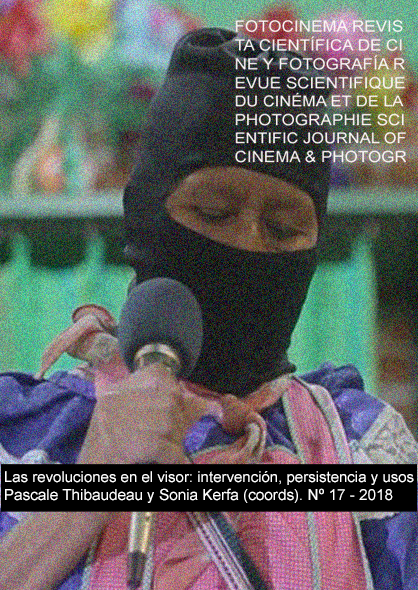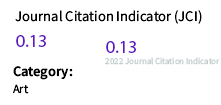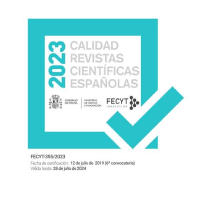Photomontage as a revolutionary agent
DOI:
https://doi.org/10.24310/Fotocinema.2018.v0i17.5106Keywords:
Photomontage, Political photomontage, Propaganda, Heartfield, El Lissitzky, KlutsisAbstract
In this article, the practice of photomontage is presented as a revolutionary agent capable of reconfiguring real events and creating new narratives based on political interests. To this end, two different approaches to the role of photomontage are presented, both carried out in a context where the political scenario was undergoing deep restructuring.
In the first case, described through an analysis of a set of works by John Heartfield, the photomontage is characterised by a discourse of opposition to a rising fascist political regime in Germany, revealing this practice as a potential medium to propose a rereading of real events and to appeal to the critical sense of the public. In this context we can say that photomontage acts as an (anti)political weapon.
In the second case, described through the analysis of a set of works by authors such as Klutsis or El Lissitzky, photomontage is characterised by a discourse in accordance with a new political era taking place in the Soviet Union in the sequence of the October Revolution.Downloads
Metrics
References
Ades, D. (2002). Fotomontage. Barcelona: Editorial Gustavo Gili.
Aragon, L. (1935/2012). John Heartfield and Revolutionary Beauty. In Adrian Sudhalter & Deborah Roldan, Photomontage Between the Wars (1918-1939) (pp. 119-121). Carleton University Art Gallery / Fundacion Juan March.
Barthes, R. (1993). Camera Lucida: Reflections on Photography. London: Vintage Classics.
Berger, J. (1972a). The Political Uses of Photo-Montage. In Selected Essays and Articles: The Look of Things. pp. 183-189. England: Penguin Books.
Berger, J. (1972b). Understanding a Photograph. In Selected Essays and Articles: The Look of Things. pp. 178-182. England: Penguin Books.
Bostanc?, M. (n.d.). “Whoever Reads Bourgeois Newspapers Becomes Blind and Deaf”: The Political Photomontage of John Heartfield. Retrieved 3 janeiro 2018, from https://www.johnheartfield.com/John-Heartfield-Exhibition/about-john-heartfield-photomontages/heartfield-photomontage-dada-political/turkish-political-art-dada-fascist/political-photomontage-bostanci
Drutt, M. (1999). El Lissitzky na Alemanha, 1922-1925. In M. Tupitsun, El Lissitzky. Para além da abstracção. Fotografia, design, cooperação (pp. 9-24). Porto: Fundação de Serralves.
Fabris, A. (2003). A fotomontagem como função política. História, São Paulo, 22(1), pp-11-57.
Fabris, A. (2005). Entre arte e propaganda: fotografia e fotomontagem na vanguarda soviética. Annals of Museu Paulista, 13(1), pp-99-132.
http://dx.doi.org/10.1590/S0101-47142005000100004
Foster, H., Krauss, R., Bois, Y., Buchloh, Be. H. D. & Joselit, D. (2011). Art Since 1900: Modernism, Antimodernism, Postmodernism. London: Thames & Hudson.
Frizot, M. (1991). Photomontage: Experimental Photography Between the Wars. London: Thames and Hudson.
Hausmann, R., Huelsenbeck, R. & Golyscheff, J. (1919/2002). What is Dadaism and what does it want in Germany. In Timothy O. Benson & Éva Forgács (ed.), Between worlds: a sourcebook of central european avant-gardes, 1910-1930 (p. 318). The MIT Press.
Hine, L. (1909/1980). Social Photography. In Alan Trachtenberg (ed.), Classic Essays on Photography (pp. 109-114). Leete's Island Books.
Hollins, R. (2002). Graphic Design: A Concise History. Thames & Hudson.
King, D. & Volland, E. (2015). John Heartfield Laughter Is a Devastating Weapon. London: Tate Publishing.
Klutsis, G. (1931/2012). Photomontage as a new kind of agitation art. In Adrian Sudhalter & Deborah Roldan, Photomontage Between the Wars (1918-1939) (pp. 116-118). Carleton University Art Gallery / Fundacion Juan March.
Kracauer, S. (1997). Photography. Theory of film: the redemption of physical reality (pp. 3-23). New Jersey: Princeton University Press.
Kracauer, S. & Levin, T. Y. (1927/1993). Photography. Critical Inquiry, 19(3), pp. 421-436. http://www.jstor.org/stable/1343959
Kriebel, S. (2009). Manufacturing Discontent: John Heartfield's Mass Medium. New German Critique 107, 36(2), pp.53-88. http://dx.doi.org/10.1215/0094033X-2009-002
Meggs, P. B. & Purvis, A. W. (2016). History of Graphic Design. New Jersey: Wiley.
Neundörfer, L. (1929/2002). Photography — The pictorial art of the present day. In Timothy O. Benson & Éva Forgács (ed.), Between worlds: a sourcebook of central european avant-gardes, 1910-1930 (p. 700). The MIT
Pisch, A. (2016). The personality cult of Stalin in Soviet posters, 1929 - 1953: archetypes, inventions and fabrications. Australia: ANU Press.
Pohlmann, U. (1999). A arquitetura de exposições de El Lissitzky na Alemanha e a sua influência sobre as mostras de propaganda fascista 1932-37. In M. Tupitsun, El Lissitzky. Para além da abstracção. Fotografia, design, cooperação (pp. 52-64). Porto: Fundação de Serralves.
Sudhalter, A. (2012). The self-reflectivity of photomontage: writing on and exhibiting the medium, 1920–1931. In Adrian Sudhalter & Deborah Roldan, Photomontage Between the Wars (1918-1939) (pp. 8-22). Carleton University Art Gallery / Fundacion Juan March.
Sontag, S. (1979). On Photography. London: Penguin.
Stoltzfus, E. (Feb 5, 2017). “Class Consciousness to the Fray!”: El Lissitzky’s Soviet Pavillion at ‘Pressa’. Retrieved from https://culturised.co.uk/2017/02/class-consciousness-to-the-fray-el-lissitzkys-installations-at-pressa/#_ftnref3
Trachtenberg, A. (ed.) (1980). Social Photography. New Haven, Conn: Leete's Island Books.
Tupitsyn, M. (1999). De volta a Moscovo. In M. Tupitsun, El Lissitzky. Para além da abstracção. Fotografia, design, cooperação (pp. 25-51). Porto: Fundação de Serralves.
Downloads
Additional Files
Published
How to Cite
Issue
Section
License
All contents published in Fotocinema Revista científica de cine y fotografía are protected under the Creative Commons Attribution-NonCommercial-ShareAlike 4.0 International (CC BY-NC-SA 4.0) license. All about this license is available in the following link: <http://creativecommons.org/licenses/by-nc-sa/4.0>
Users can copy, use, redistribute, share and exhibit publicly as long as:
- The original source and authorship of the material are cited (Journal, Publisher and URL of the work).
- It is not used for comercial purposes.
- The existence of the license and its especifications are mentioned.
There are two sets of authors’ rights: moral and property rights. Moral rights are perpetual prerogatives, unrenounceable, not-transferable, unalienable, imprescriptible and inembargable. According to authors’ rights legislation, Fotocinema. Revista científica de cine y fotografía recognizes and respects authors moral rights, as well as the ownership of property rights, which will be transferred to University of Malaga in open access. The property rights are referred to the benefits that are gained by the use or the dissemination of works. Fotocinema. Revista científica de cine y fotografía is published in an open access form and it is exclusively licenced by any means for doing or authorising distribution, dissemination, reproduction, , adaptation, translation or arrangement of works.
Authors are responsable for obtaining the necessary permission to use copyrighted images.










.png)

13.png)




